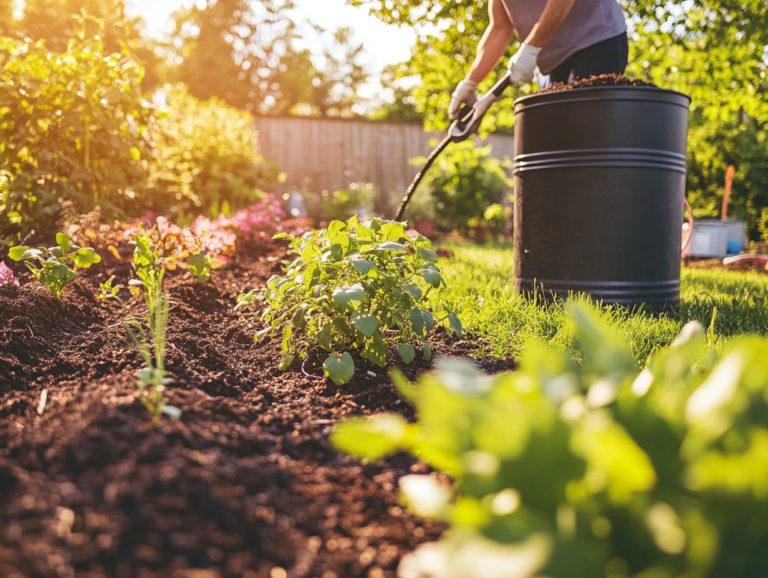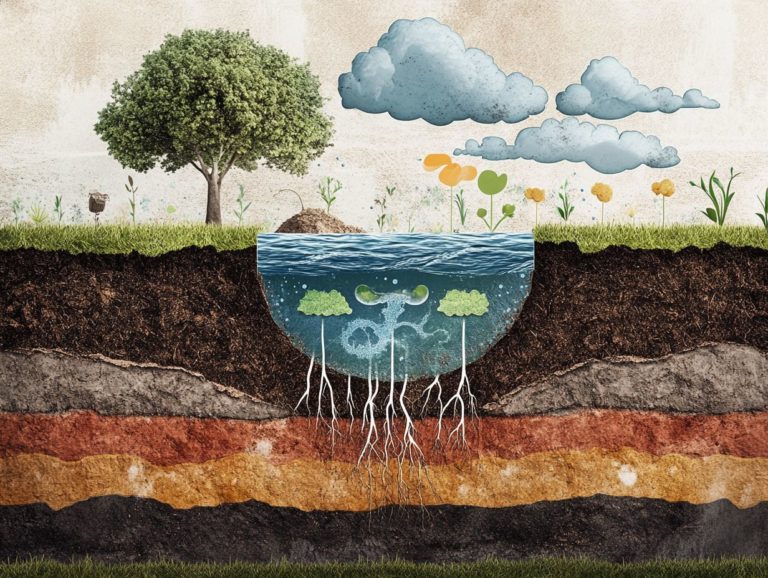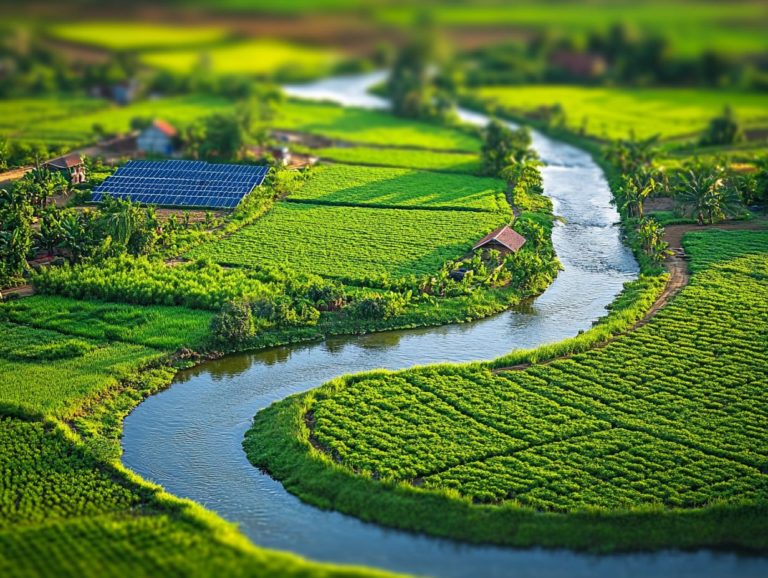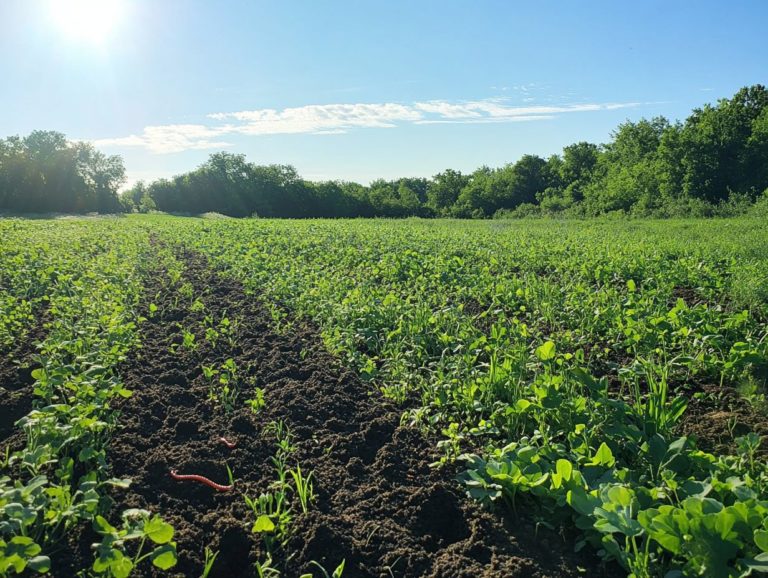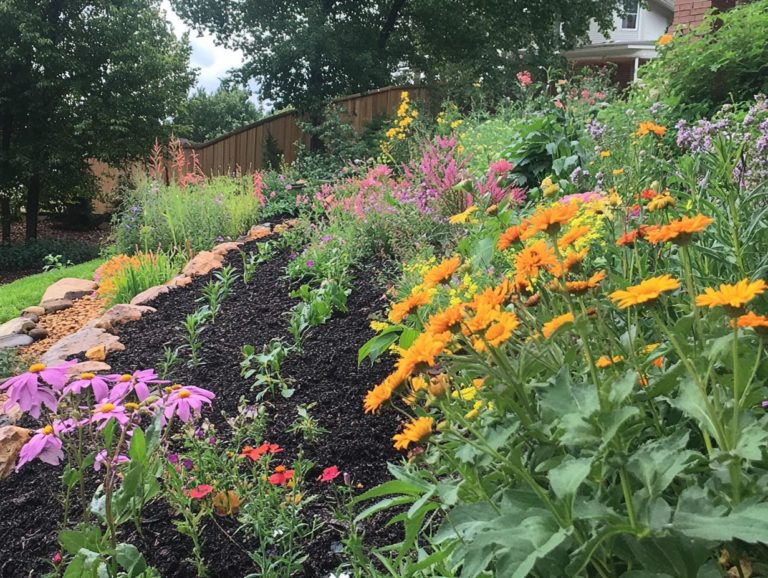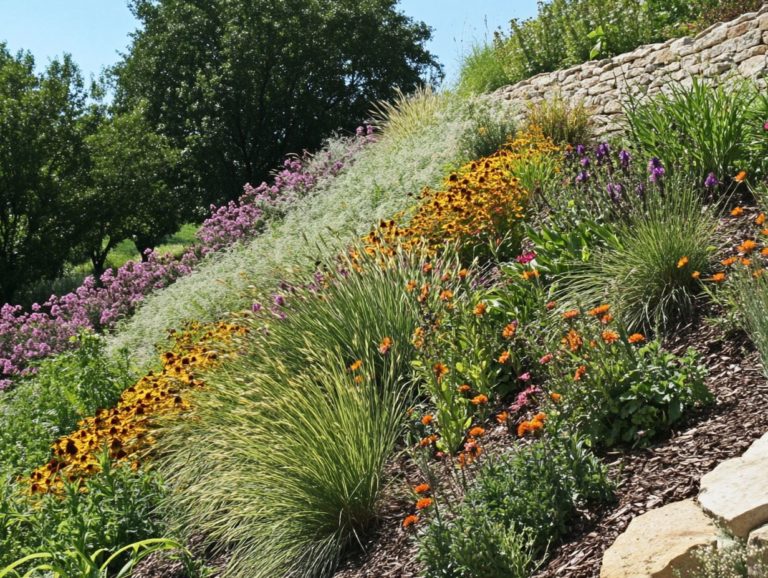The Importance of Mulching in Water Conservation
Mulching is more than just garden decoration. It is a powerful tool for conserving water.
In this article, you will explore the essence of mulching. You will learn about the different types available and how they can significantly reduce water evaporation while enhancing soil moisture retention.
You’ll also find practical tips for selecting and using mulch effectively. This includes how to choose the right mulch for the best results, along with additional strategies to amplify your water-saving efforts.
Discover how small changes in your gardening routine can lead to big wins in water conservation!
Contents
- Key Takeaways:
- Understanding Mulching
- Benefits of Mulching for Water Conservation
- How to Properly Mulch for Water Conservation
- Additional Tips for Water Conservation
- Frequently Asked Questions
- What is the importance of mulching in water conservation?
- How does mulching help with water conservation?
- What types of materials can be used for mulching in water conservation?
- How does mulching benefit plants in terms of water conservation?
- Are there any other benefits of mulching besides water conservation?
- How often should mulch be applied to maintain water conservation benefits?
Key Takeaways:
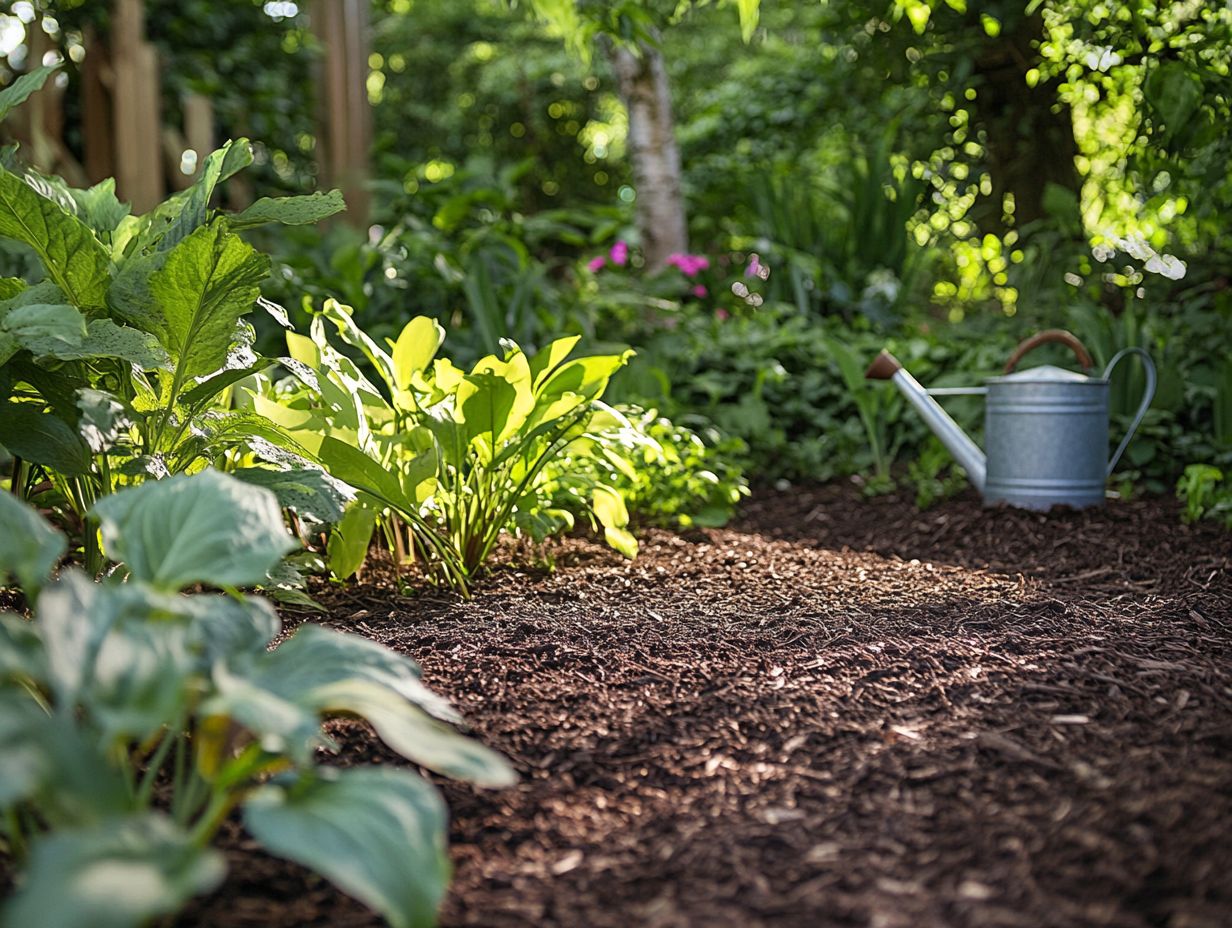
- Mulching helps conserve water by reducing evaporation and improving soil moisture retention.
- Choosing the right mulch and applying it correctly are crucial for effective water conservation, especially in arid regions.
- Mulching is just one part of a comprehensive approach to water conservation; other practices, such as proper irrigation and plant selection, should also be considered.
Understanding Mulching
Mulching is an essential practice for gardeners facing challenges in crop production. This technique involves covering the soil around your plants with various materials, either organic (like straw and leaves) or inorganic (like plastic film mulch), to boost soil health, manage weeds, and conserve precious water.
By understanding the different types of mulch and their applications, you can cultivate a successful garden that enhances crop yields and overall gardening success.
Definition and Types of Mulch
Mulch consists of various materials applied to the soil surface in gardening and agriculture. It serves multiple purposes that enhance both soil health and crop growth.
This protective layer acts as a vital barrier between the soil and its surroundings. It significantly influences soil moisture retention and moderates temperature.
- Organic mulches, like straw and leaves, decompose over time, enriching the soil with nutrients and improving its structure while effectively suppressing weeds.
- In contrast, inorganic options such as plastic film mulch provide a longer-lasting solution that helps prevent evaporation, conserving water and enhancing nutrient availability.
By understanding the different types of mulch materials and their unique benefits, you can create a thriving and sustainable gardening ecosystem.
Benefits of Mulching for Water Conservation
The benefits of mulching extend well beyond aesthetics; they play a crucial role in water conservation. By retaining moisture, mulching boosts crop production, suppresses weeds, and promotes healthier soil.
Adopting this practice can significantly enhance the vitality of your garden or agricultural efforts.
Reducing Water Evaporation
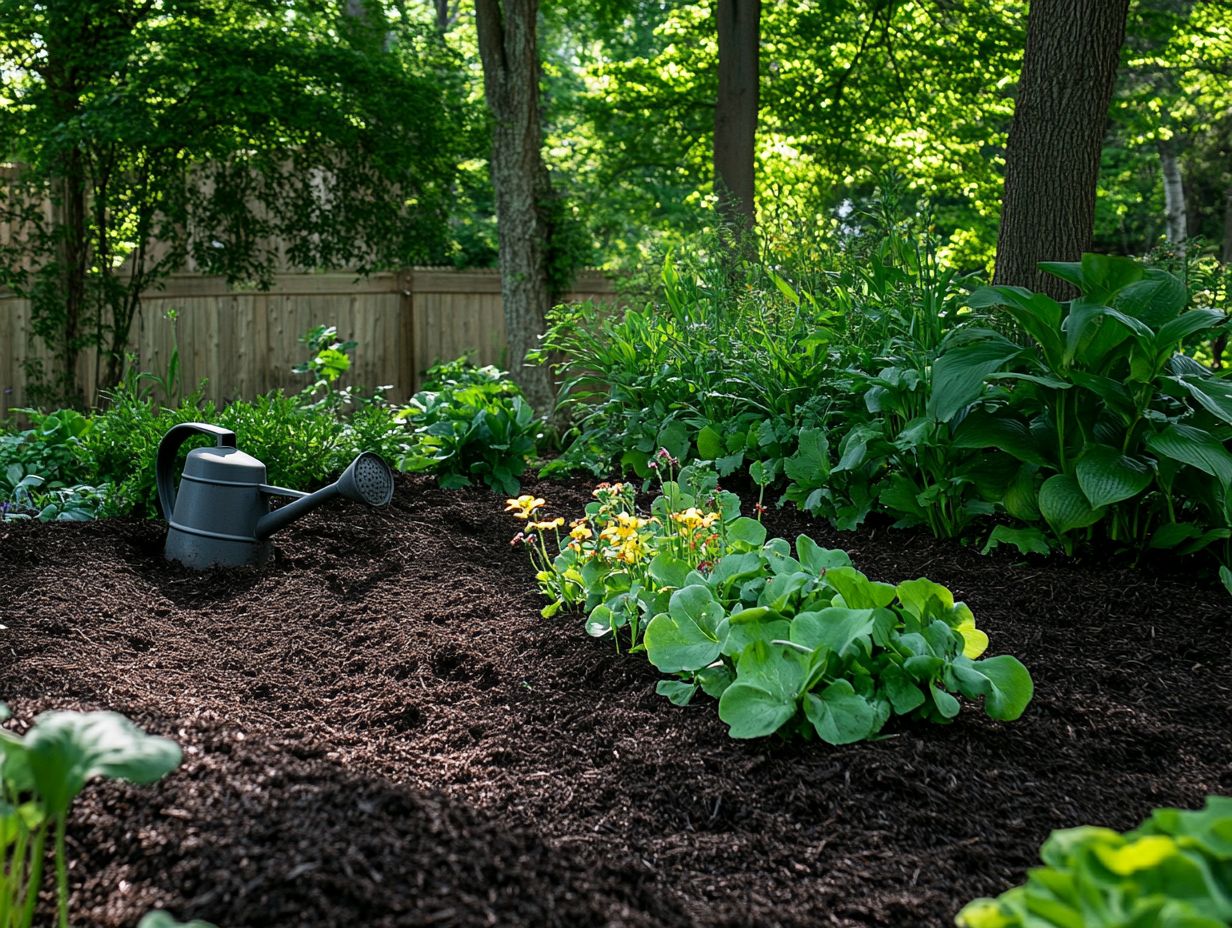
One significant benefit of mulching is its remarkable ability to reduce water evaporation from the soil surface. This allows you to conserve essential water resources and maintain optimal soil moisture levels.
In arid regions where rainfall is unpredictable and often scarce, this practice becomes even more vital. By creating a protective barrier over the soil, mulching moderates temperature fluctuations, keeping the soil cooler during scorching days and warmer during chilly nights.
This temperature regulation is particularly crucial for crops. It enables them to establish deeper root systems, promoting healthier growth and yielding better harvests. Using mulch as a water-saving technique enhances moisture retention and minimizes the need for frequent irrigation, fostering a more resilient agricultural ecosystem.
Start mulching today to boost your garden’s health and conserve water!
Improving Soil Moisture Retention
Mulching is an exceptional technique for enhancing soil moisture retention. It enables you, as a market gardener, to grow crops more efficiently, especially in drought-prone areas or regions affected by global warming.
This practice acts as a protective shield against evaporation. It also enriches soil health by adding organic matter as it decomposes. Various materials, such as wood chips, straw, and grass clippings, fulfill different roles. For instance, moisture-retentive mulches like coir or bark can drastically reduce your irrigation needs.
Applying mulch requires sticking to recommended application rates, generally around two to four inches thick, depending on the material you choose. By following best practices keeping a safe distance from plant stems and regularly checking moisture levels you’ll ensure that your crops thrive while conserving water efficiently.
Preventing Soil Erosion
Preventing soil erosion is a significant advantage of mulching. It protects the soil structure and fosters long-term soil health through improved water conservation strategies.
By establishing a protective layer on the surface of the soil, mulch significantly reduces the impact of raindrops and wind. This serves as a shield against forces that lead to degradation. The barrier cuts down on water runoff. It helps moisture reach the soil, which is essential for healthy plants.
Incorporating mulching techniques into various agricultural practices, such as no-till farming and cover cropping, enhances soil stability and mitigates environmental contamination. You not only protect the vitality of your crops but also contribute to a more sustainable agricultural ecosystem.
How to Properly Mulch for Water Conservation
Ready to conserve water? Let s dive into the essential steps for effective mulching.
- Begin by selecting the right type of mulch that meets your specific needs.
- Next, prepare the soil meticulously to ensure optimal conditions.
- When applying the mulch, do so with precision to maximize its effectiveness.
- Finally, maintain the mulch throughout the growing season, ensuring it continues to serve its purpose in conserving water and supporting healthy plant growth.
Choosing the Right Mulch
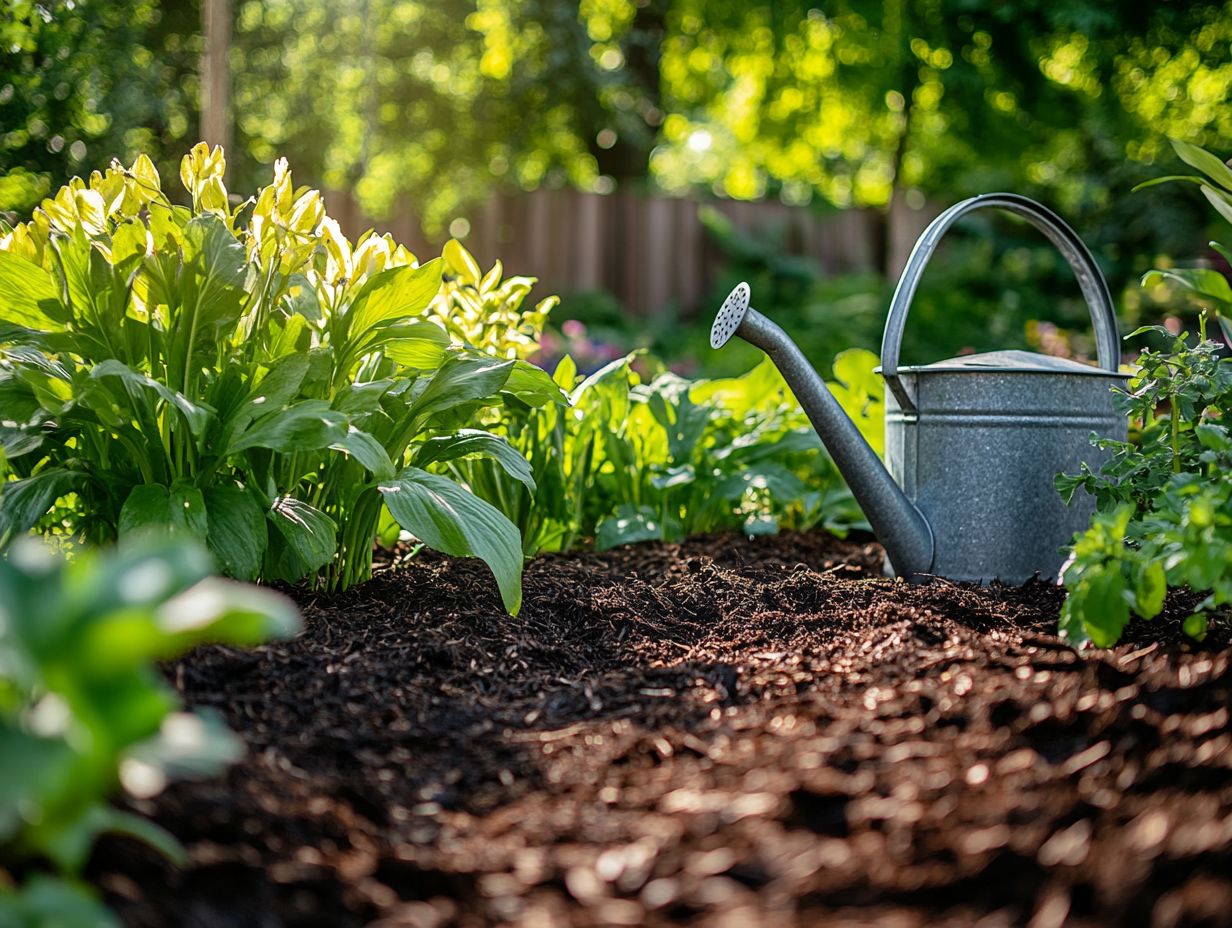
Choosing the right mulch is crucial for maximizing water conservation and ensuring your crops thrive. Options range from natural mulch that breaks down over time to innovative plastic materials used in farming.
Understanding your specific environmental conditions and the unique needs of your crops will enhance your decision-making process. Different mulching materials offer varying benefits based on factors such as climate, soil type, and water availability.
For instance, natural mulch options like straw or wood chips improve soil fertility over time as they break down. These are perfect for organic farming and boost microbial activity.
Conversely, plastic film mulch excels in weed suppression and moisture retention, especially in dry areas. However, it presents disposal challenges and can contribute to plastic pollution if not managed properly. By grasping the diverse mulch options available, you can make informed choices tailored to your specific agricultural context.
Application Techniques
The techniques you use for mulching can greatly impact its effectiveness in conserving water. Applying the right mulch at the correct rate, along with the right gardening tools, can enhance its benefits significantly.
Aim to apply a layer of mulch that is about two to four inches thick. Spread it evenly around your plants, avoiding direct contact with the stems to prevent rot. Maintaining a few inches of space between the mulch and the base of your plants allows for essential air circulation, vital for their health.
Using tools like a rake for even distribution or a mulch fork to adjust the depth can greatly enhance your efficiency. By carefully selecting and utilizing these tools, you can maximize the benefits of mulching, ultimately nurturing a thriving garden ecosystem.
Additional Tips for Water Conservation
In addition to mulching, you can explore several advanced tips and practices that significantly elevate your water conservation efforts, particularly in the context of sustainable agriculture.
Consider integrating pest control strategies and implementing effective water conservation systems to optimize your results.
Other Practices to Complement Mulching
Complementing your mulching efforts with other agricultural practices, such as crop rotation and cover cropping, can significantly elevate soil health.
These practices enhance water conservation efficiency. By introducing diverse crops into your rotation, you can disrupt pest populations and naturally enrich the soil.
For instance, a study from the Midwest illustrates the advantages of rotating corn with soybeans. Not only does it boost yields, but it also minimizes the reliance on chemical fertilizers.
Planting cover crops like clover or rye during the off-season enriches your soil with organic matter, improving its structure.
A case study from a sustainable farm in California demonstrated that integrating these practices with mulching led to a remarkable reduction in weed pressure, fostering healthier crops and more resilient farming systems overall.
Frequently Asked Questions
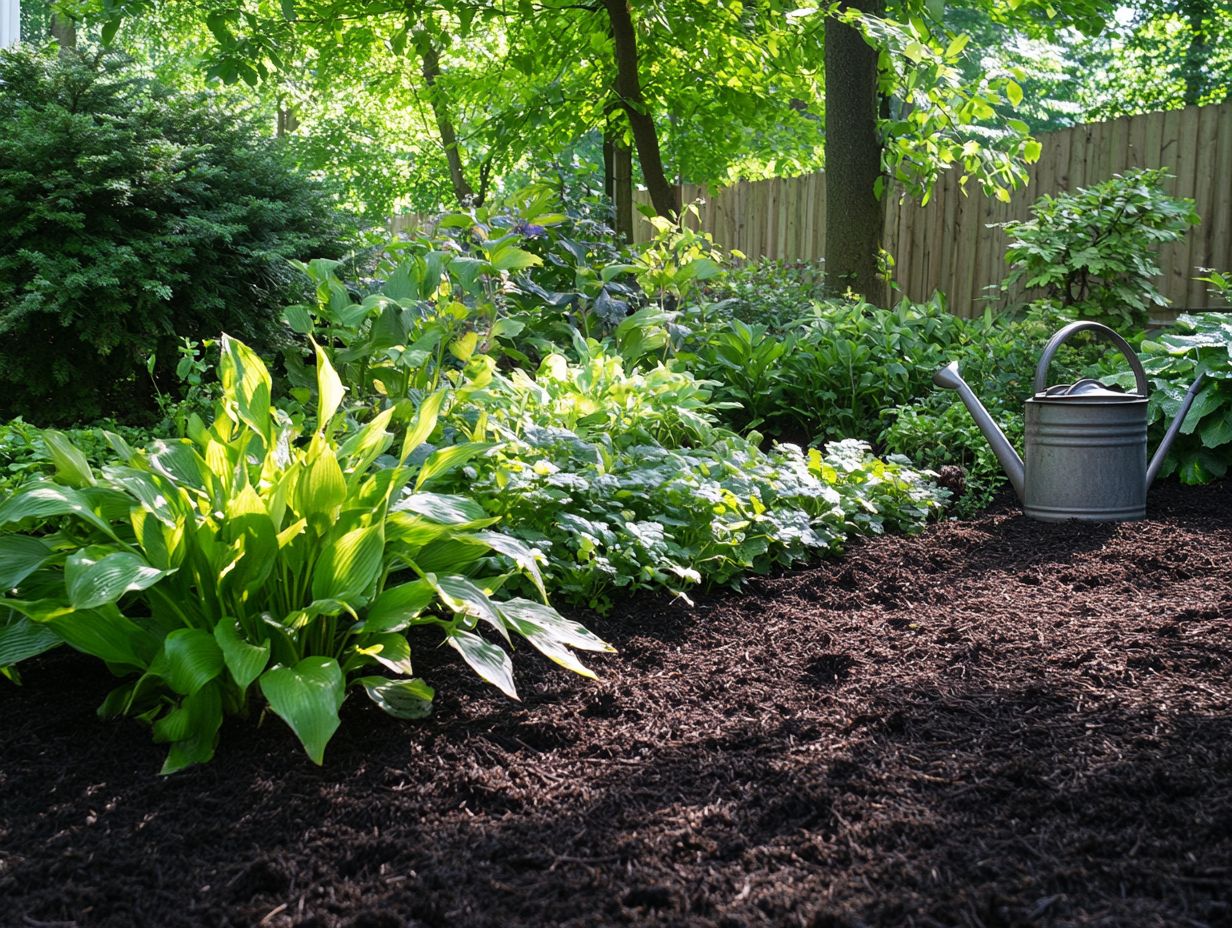
What is the importance of mulching in water conservation?
Mulching helps to retain soil moisture and reduce evaporation, ultimately conserving water in the garden. To learn more about this practice, check out the role of mulch in drought gardening.
How does mulching help with water conservation?
Mulching creates a barrier on the soil surface, preventing water from evaporating and allowing it to penetrate into the soil where plants can access it.
What types of materials can be used for mulching in water conservation?
Organic materials such as shredded leaves, straw, grass clippings, and bark are great options for mulching to conserve water.
Inorganic materials like gravel, rocks, and plastic can also be used.
How does mulching benefit plants in terms of water conservation?
Mulching helps to regulate soil temperature, reducing stress on plants and allowing them to better utilize water for growth and development.
Are there any other benefits of mulching besides water conservation?
Yes, mulching also helps to suppress weeds, improve soil health, and add nutrients to the soil as the mulch breaks down over time.
How often should mulch be applied to maintain water conservation benefits?
Replenish your mulch every 1-2 years to keep your garden thriving. It’s important to maintain a layer of 2-3 inches for optimal water conservation benefits.

